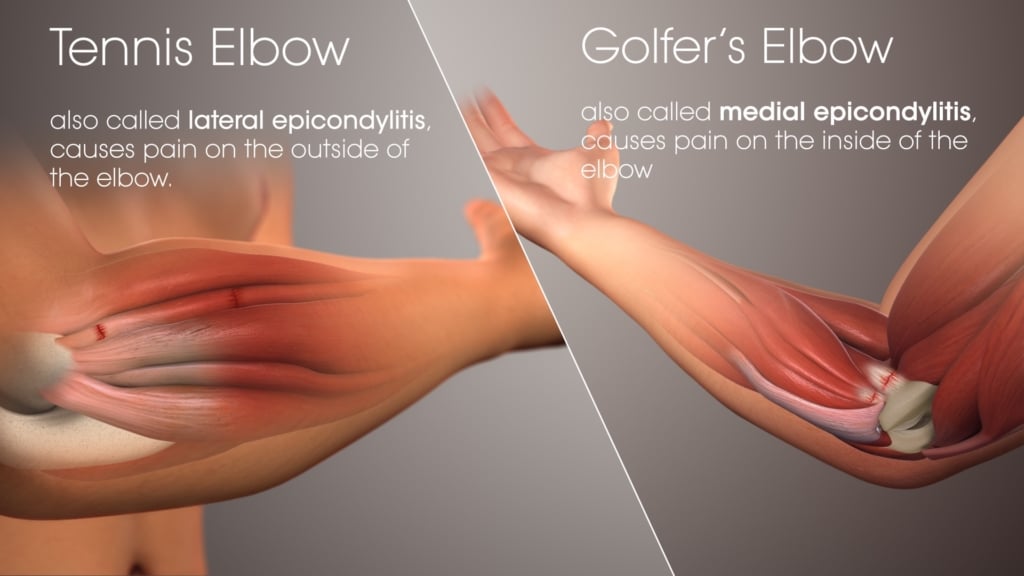Golf is a popular sport enjoyed by millions of people around the world. However, like any physical activity, golf can result in injuries if not performed correctly. One such injury that affects golfers, as well as other athletes, is tennis elbow. Tennis elbow, also known as lateral epicondylitis, is a condition that causes pain and tenderness on the outer part of the elbow. While it is commonly associated with tennis players, it can occur in anyone who performs repetitive motions with their forearm, wrist, and hand, including golfers.
The question of whether golf can cause tennis elbow is one that has been debated for years. The repetitive swinging motion used in golf can place a great deal of stress on the muscles and tendons in the forearm and elbow, which can lead to the development of tennis elbow over time. However, the connection between golf and tennis elbow is not always clear, and many factors can contribute to the development of this painful condition.
In this article, we will explore the relationship between golf and tennis elbow in detail. We will examine the causes of tennis elbow, the connection between golf and tennis elbow, and the prevention and treatment options available to golfers who may be at risk for this condition. By the end of this article, you will have a better understanding of whether golf can cause tennis elbow and what steps you can take to prevent and treat this common injury.

What is Tennis Elbow?
Tennis elbow, or lateral epicondylitis, is a condition that causes pain and tenderness on the outer part of the elbow. The pain is usually the result of small tears in the tendons that attach to the lateral epicondyle, a bony bump on the outer part of the elbow. These tears can occur as a result of repetitive motions, such as those used in tennis or golf.
What Causes Tennis Elbow?
Tennis elbow can be caused by a variety of factors, including repetitive motions and overuse, forceful gripping and twisting, improper equipment and technique, age and gender factors, and other underlying medical conditions.
Repetitive motions and overuse can occur in a variety of sports, including golf. When a golfer swings the club repeatedly, the muscles and tendons in the forearm, wrist, and hand can become strained and damaged, leading to the development of tennis elbow.
Forceful gripping and twisting, which are common in golf, can also contribute to the development of tennis elbow. The forceful grip used to hold the club and the twisting motion used to swing it can place a great deal of stress on the tendons in the forearm and elbow.
Improper equipment and technique can also be a contributing factor. Using a golf club that is too heavy or too long, or using improper grip techniques, can increase the risk of developing tennis elbow.
Age and gender can also be factors in the development of tennis elbow. The condition is most common in individuals between the ages of 30 and 50, and is more common in men than women.
Other underlying medical conditions, such as rheumatoid arthritis or diabetes, can also increase the risk of developing tennis elbow.
Connection Between Golf and Tennis Elbow
The golf swing can be a significant contributor to the development of tennis elbow. Golfers use a repetitive swinging motion that places a great deal of stress on the muscles and tendons in the forearm, wrist, and hand. Over time, this stress can cause small tears in the tendons, leading to the development of tennis elbow.
In addition to the repetitive motion of the golf swing, other factors such as the grip on the club and the weight of the club can also contribute to the development of tennis elbow. Using a grip that is too tight or using a club that is too heavy can increase the stress on the tendons in the forearm and elbow.
The similarities between tennis elbow and golf elbow are striking. Both conditions involve small tears in the tendons that attach to the lateral epicondyle. The primary difference between the two conditions is the cause of the tears. Tennis elbow is typically caused by repetitive motions in the wrist and forearm, while golf elbow is caused by the repetitive motion of the golf swing.
Prevention and Treatment of Tennis Elbow
Prevention is the best way to avoid the development of tennis elbow. Proper technique and equipment are essential in preventing this condition.
When playing golf, it is important to use proper grip techniques and to select a club that is appropriate for your skill level and physical abilities. It is also important to warm up properly before playing, and to take breaks as needed to avoid overuse.
If tennis elbow does develop, there are a variety of treatment options available. Rest and ice can help to reduce pain and inflammation, and over-the-counter pain medications can be used to manage discomfort. In some cases, physical therapy or bracing may be recommended to help strengthen the muscles and tendons and promote healing. In severe cases, surgery may be necessary to repair the damaged tendons.
Conclusion
In conclusion, golf can cause tennis elbow due to the repetitive swinging motion and the stress placed on the muscles and tendons in the forearm, wrist, and hand. Proper technique and equipment are essential in preventing this condition. If tennis elbow does develop, a variety of treatment options are available, including rest, ice, pain medication, physical therapy, bracing, and surgery.
Golfers should be aware of the risks of tennis elbow and take steps to prevent its development. By using proper technique and equipment, and taking breaks as needed, golfers can reduce their risk of developing this painful condition and continue to enjoy the game they love.
